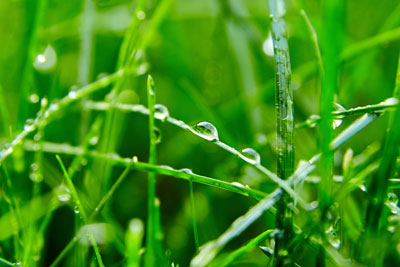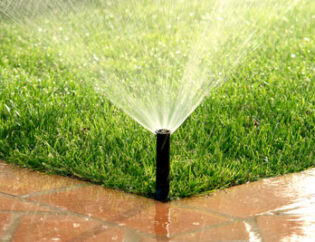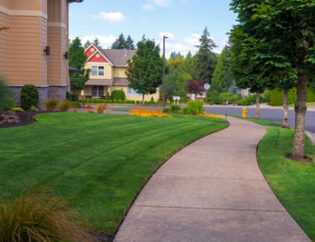 Every living thing needs water to survive. Your lawn is no exception. As the weather heats up, your lawn processes more and more water. On average needing 1″- 2″ per week. Unfortunately, at the same time that the lawn is using more water through the summer, there’s usually less natural rainfall available. Without a helping hand in the form of extra sprinkling, your lawn may go dormant or suffer serious thinning from lack of grass care. Dragging that hose around, or turning on the irrigation system, is one of the most important things you can do to ensure a healthy environment for growing grass, and to ensure you get the most from your investment in Shamrock Pest And Lawn Services.
Every living thing needs water to survive. Your lawn is no exception. As the weather heats up, your lawn processes more and more water. On average needing 1″- 2″ per week. Unfortunately, at the same time that the lawn is using more water through the summer, there’s usually less natural rainfall available. Without a helping hand in the form of extra sprinkling, your lawn may go dormant or suffer serious thinning from lack of grass care. Dragging that hose around, or turning on the irrigation system, is one of the most important things you can do to ensure a healthy environment for growing grass, and to ensure you get the most from your investment in Shamrock Pest And Lawn Services.
What Happens To The Water You Put On The Lawn?
Grass blades are covered with tiny holes (or pores) called stomata. The plants absorb water mixed with nutrients and minerals through the roots and use all of these things in producing food. This process is called photosynthesis. Excess water and turf “waste material” (oxygen) are released through the pores on the grass blades. This is called transpiration, and without enough water, the whole cycle soon slows or even stops completely. Transpiration replaces oxygen in the atmosphere and releases water vapor into the air. It’s this process that allows a lawn as small as 50′ by 50′ to produce enough oxygen to support a family of four.
Learn ways to test and adjust your irrigation system for correct and even coverage.
Soils Make a Big Difference
Your soil type affects how often and how long you need to water. Sandy soils absorbs water fast but loses it just as quickly. Loamy soils are ideal because they have a good absorbing rate and can also hold water well. Clay soils can be hard to water because they take the water in very slowly. On the other hand, clay holds water well and dries more slowly than other soil types. The average lawn consumes about 1” of water per week (as measured in a rain gauge or coffee can). When there isn’t enough rain to meet the need, watering grass care is the answer. Soil dries out from the surface downward. By watering deeply, you encourage deeper rooting of the lawn. Water each area long enough to saturate the soil to a depth of 6” (that’s about 1”-2″ of water per area per week). If possible, apply most of this 1”- 2″ of water at in as few days as possible. Read tips from our experts to learn about using an automatic sprinkler system to help you control watering. Follow the 1”-2″ rule, and you’ll make a “deep impression” on your lawn. Need help setting up a good watering program? Contact your neighborhood Shamrock Pest And Lawn Care Service. We’re your neighborhood grass and lawn care team.





